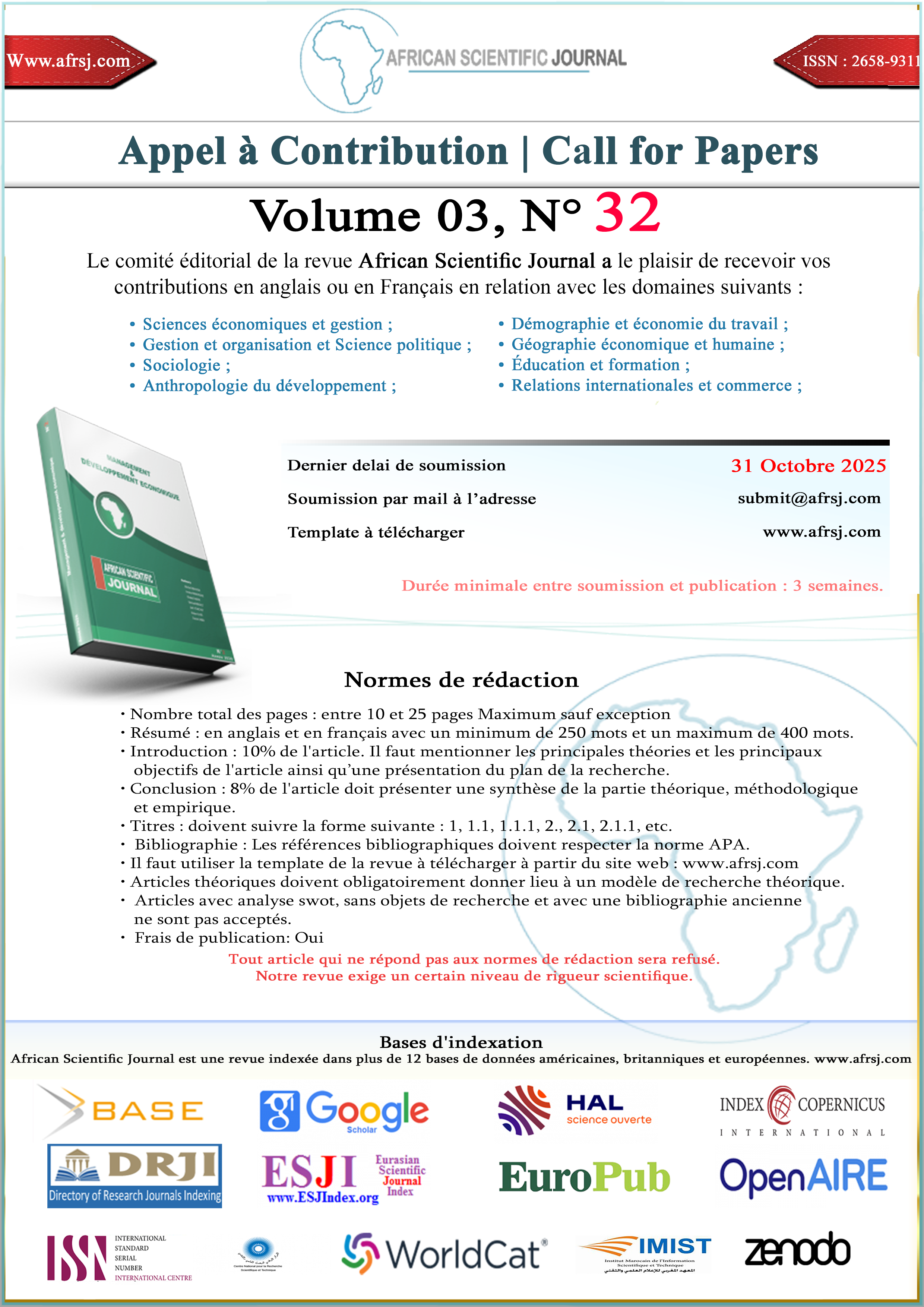Bibliometric Analysis of Artificial Intelligence Applications in Human Resource Management (2010–2025): Mapping Global Research Trends and Organizational Implications
DOI :
https://doi.org/10.5281/zenodo.15927982Mots-clés :
Artificial Intelligence, Human Resource Management, Bibliometric Analysis, Industrial Organization, Co-word Mapping, Decision-Making StructuresRésumé
Abstract
Purpose: In this study, we seek to systematically chart the intellectual structure of AI applications in HRM based on a bibliometric approach from 2010 to 2025 as an item. This study implies a positivism epistemological stance, identifying publication trends within a positivist perspective, using structured data and statistical tools to reveal generalized patterns within the academic literature. It analyses the development of the literature, top contributors, thematic networks and collaboration ties, and concludes with consideration of the findings for the field of industrial organizations. Finally, the reasoning for this study goes deductive using a general database analyzed to drive findings that are interpreted to draw specific conclusions about thematic evolution in this field.
Design/methodology/approach: A total of 354 peer-reviewed articles were systematically extracted from the Scopus database using a targeted search query. combining AI and HRM-related terms. This bibliometric dataset constitutes the empirical sample of the study. The extraction process was governed by inclusion criteria such as language (English), document type (articles only), and relevance to HRM-AI topics. The analysis was conducted using Bibliometrix (R package) for performance indicators as a quantitative analysis and VOSviewer for co-occurrence and co-authorship visualizations and thematic mapping. The study focuses on five research questions addressing productivity trends, influential entities, thematic clusters, international collaboration, and research gaps. Explanatory variables of this study include publication year, country origin, document affiliation, author productivity and citation count.
Findings: The results show a sharp increase in publication volume post-2018, indicating increasing academic interest in the intersection between AI and HRM, with strong contributions from institutions with items in the USA, UK, and India. Six major thematic clusters were identified, spanning AI adoption in HRM, decision-making, systematic reviews, ethical considerations, and education-related topics. However, regional imbalances persist, particularly with the underrepresentation of African and MENA contexts. Additionally, the literature often overlooks function-specific HR practices and lacks multidisciplinary depth. This bibliometric mapping concludes that valuable insights for researchers to understand the evolving landscape of AI integration on HRM.
Practical implications: By linking findings to the domain of Industrial Organization, the study highlights how AI reshapes decision-making structures, reallocates managerial authority, and influences organizational power dynamics. These insights inform both academic discourse and HR policy design.
Originality/value: This is one of the few papers that provides a longitudinal bibliometric mapping of AI-HRM research. It offers an organized agenda for future work to promote inclusiveness by geographic scope, discriminant-level detail, and disciplinary integration.
Keywords: Artificial Intelligence, Human Resource Management, Bibliometric Analysis, Industrial Organization, Co-word Mapping, Decision-Making Structures.
Téléchargements
Publiée
Comment citer
Numéro
Rubrique
Licence
(c) Tous droits réservés African Scientific Journal 2025

Ce travail est disponible sous licence Creative Commons Attribution - Pas d'Utilisation Commerciale - Pas de Modification 4.0 International.





















